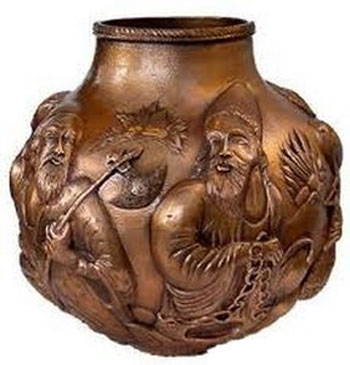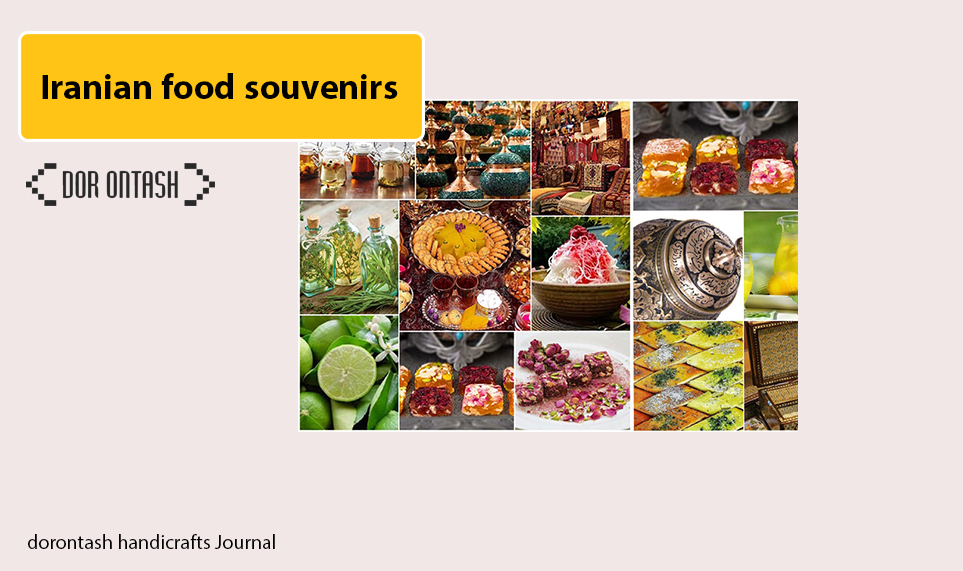What is persian ghalamzani?
The vast land of Iran has always been a fertile ground for the creation of pure, original and spiritual arts and at the same time compatible with people’s lives and the customs of their communities and tribes. According to the available historical documents, the history of pen making and the use of persian ghalamzani more than a thousand years before Christ.
The remaining works from each period and from different eras express a continuous and continuous movement that, in addition to the tangible and material symbols created in the form of plates, cups, etc., represent a spiritual and spiritual atmosphere that is rooted in the prevailing beliefs. And beliefs passed their time and finally caused the emergence of sacred phenomena or spiritual and original arts. Introduction to calligraphy in Isfahan What are the products of this line?
The making of pen and other arts is not only the activity of a master or craftsman and tool maker in using a pen and hammer on a piece of metal or a bowl, but it depends on the passion and other aspects of human excellence in the use of meditation. . And I work. A smart and intelligent person, with the nature of intelligence, explores deeply in nature and creatures and ascends in the struggle that causes the emergence and crystallization of a passive and conscious movement called the creation of a work of art. A combination of the natural unconscious joy in the gut and the tools, equipment, materials and substances found in the material world. Introduction to calligraphy in Isfahan What are the products of this line?
Definition of persian ghalamzani| Handicrafts of persian ghalamzani in Isfahan
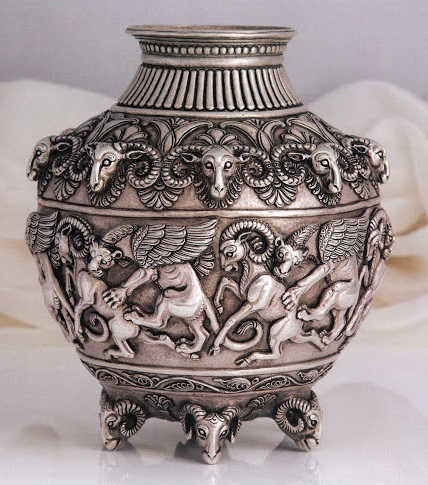
Familiarity with calligraphy in Isfahan What are the products of this line? Brushing is decorating and carving patterns on metal objects, especially copper, gold, brass, and copper, and in other words, creating lines and patterns by means of a pen with a hammer blow on metal objects. Due to its softness and malleability, copper is more common in the art of pen-making than other metals, and on the other hand, according to archaeologists and art historians, copper is the first metal that has attracted the attention of mankind in the art of pen-making and metalwork. Kalamzani is one of the fields of traditional arts of Iran, which can be classified in the category of synthetic arts and collection of metal objects.
Engraving on metal objects made of copper, brass, gold and silver using a hammer and a steel pen is called pen.
Decorative decorative painting
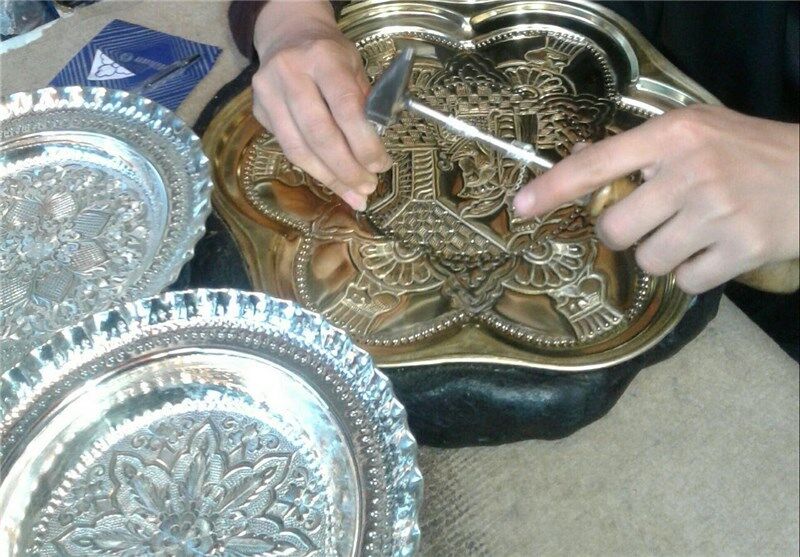
Painting is a decorative method that the previous man got acquainted with the minerals in nature and discovered how to deal with them.
Calligraphy is an original and valuable art in the traditional culture and spiritual art of Iranians, and it has a special place that is seen with the help of the Iranian artist’s taste and thought, with the influence of customs, traditions, culture and religion. he ate. And the opinion of Iranians for the most beautiful piece of metal has left its mark in the long history of various events and developments, and its durability has reached future generations.
Therefore, the art of metal painting is more important for artists because it has more life and survival than other things. The role of motifs and symbols of motifs in different historical and cultural periods is different according to ideological and cultural transformations, it changes under the influence of social conditions and follows the course of evolution.
The history of this line is attributed to the time of Scythians or Scythians who were of Aryan race.
The vast land of Iran has continuously been a breeding ground for the creation of pure, original and spiritual arts, at the same time appropriate to the lives of the people and the customs of their communities and tribes. According to the existing historical documents, the writing and use of metals dates back to more than a thousand years BC. The works left in each period and different eras represent a continuous and uninterrupted movement that, in addition to the concrete and material symbols that are in the form of dishes, cups And… the persian ghalamzani that came into being represents the spirit-giving and spiritual atmosphere that had its roots in the beliefs and convictions of its period and ultimately led to the emergence of sacred phenomena or spiritual and originalist arts.
Pen-making and other such arts are not the only activity of a master or craftsman and tool-maker in using a pen and hammer on a metal piece or container, but it is based on enthusiasm and other aspects of human distinction in using his meditation and work. A smart and clever person who, with the essence of intelligence, embarks on a deep revelation in nature and creatures and rises to a struggle that causes the emergence and crystallization of a conscious passive movement in the name of creating a work of art that is a mixture of the natural unconscious joy in the gut and tools and equipment. And materials and materials exist in the material world.
The art of calligraphy is one of the handicrafts of Isfahan , Shiraz and Tabriz, each of which has its own style. Brushing is to decorate and carve designs on metal objects, especially copper, gold, brass, and iron, in other words, creating lines and patterns by means of a pen with a hammer blow on metal objects. Due to its softness and malleability, copper is more common than other metals in the art of engraving. On the other hand, according to archaeologists and art historians, copper is the first metal that was noticed by humans in the art of metalwork and engraving. Calligraphy is one of the fields of traditional arts of Iran, which can be classified in the category of artificial arts and in the group of metalwork.
Calligraphy is a noble and valuable art in the traditional culture and spiritual art of Iranians, and it has a special place, which, with the help of Iranian artist’s taste and thought, with the influence of customs, traditions, culture and religion, expresses the opinions and ideas of Iranians to the most beautiful metal object. It has left a deep mark and in the long history of various events and developments, and has passed its permanence to the next generations.
The art of painting on metal is therefore more important to artists because it has more durability and survival than other objects. The role of motifs and symbols of motifs in different historical and cultural periods are different based on ideological and cultural transformations, and they change under the influence of social conditions and follow the course of evolution.
The history of calligraphy is attributed to the time of the Scythians, who were of Aryan race.
Prehistoric period Isfahan calligraphy handicrafts
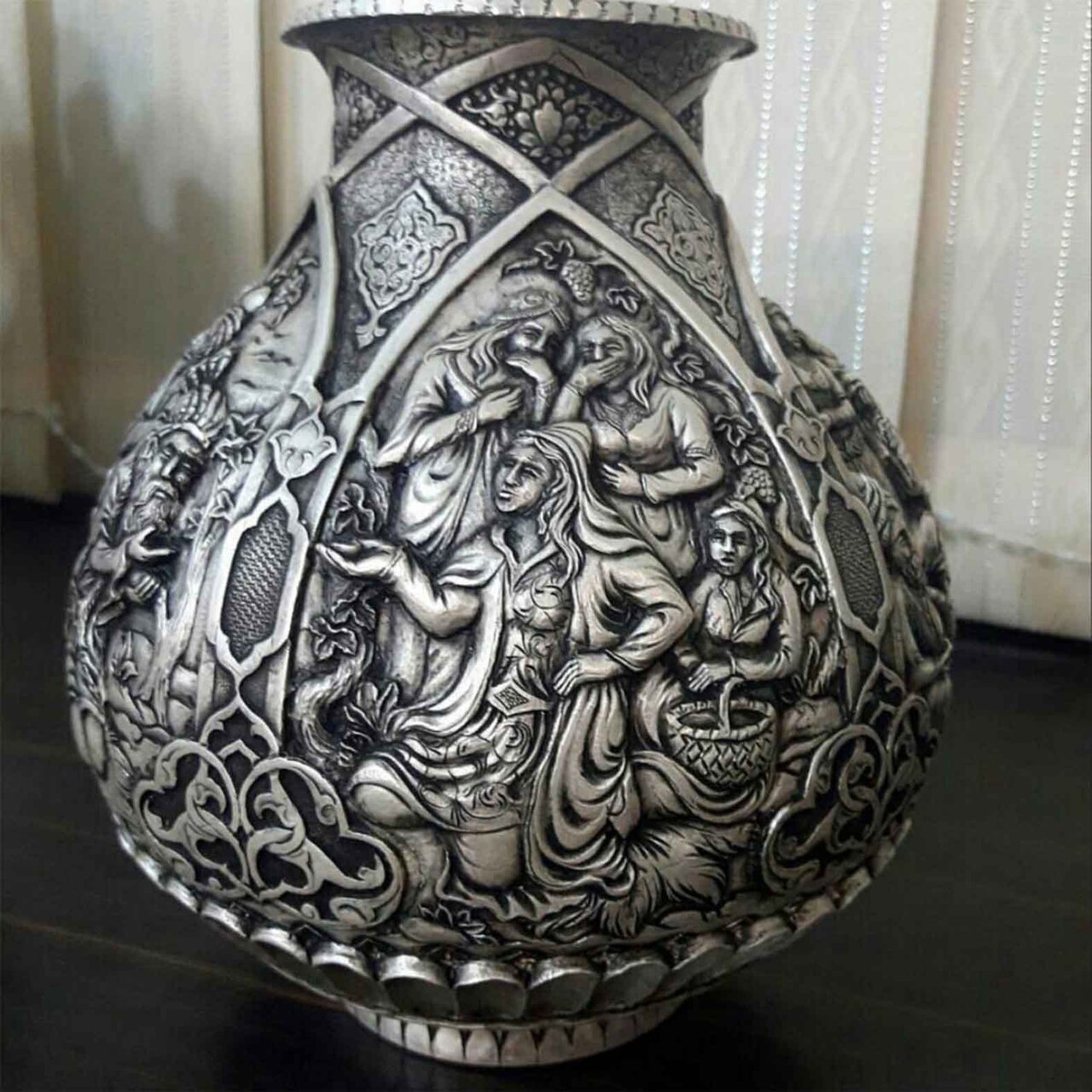
The history of this art in Iran does not have a clear history and it is taken from a documentary work that shows the first position of the piece and the use of metal, especially copper, in Iran and the East several thousand years before Christ. . At the end of the second millennium and the beginning of the first millennium BC, the art and craft of metallurgy flourished in different parts of Iran, especially in the north, northwest and south of the Mazandaran Sea. Among the notable works obtained during this period is the Golden Cup of Hasanlu, which was discovered in 1335 AH and has outstanding decorations, including gods riding on the collar of a jacket or a chariot.
In the first millennium BC, metalworking and pen-making enjoyed prosperity and a special status in Iran, and since then valuable works such as gold cups have remained in Marlica.
The art of persian ghalamzani in the Medes period Isfahan calligraphy handicrafts

Some works of calligraphy have been preserved from the Medes, which were used in the 7th century BC. In the north of Iran, the objects obtained from Azerbaijan show that the influence of the Scythians gradually decreased and the style of the Medes took its place at this time. Metal documents obtained from the Median period, especially in the 6th and 7th centuries BC, are low objects from Sanandaj, including gold and silver vessels and ornaments such as gold cups and animal figurines. be seen.
Calligraphy in the Achaemenid period | Handicrafts of calligraphy in Isfahan
With the arrival of the Iranians and the formation of the Achaemenid government (330-550 BC), the art of calligraphy changed and gained a special status, and Brodovar left behind its own works. Ikhanen period was the peak of metalworking art in the fields of casting, hammering, inlay work, etc. And . As a result of Alexander’s attack and the burning of Persepolis, many works were destroyed or melted down and turned into coins by Alexander’s orders.
Among the objects known in the Achaemenid period, two concrete tablets weighing 4 kg and a gold tablet weighing 5 kg can be mentioned. It is available to you and you can use them.
The motifs of this period are in the form of animals and plants such as palms, flowers, buds and horizontal grooves. which is kept in the National Museum of Iran.
Pen-writing in the Seleucid period | Handicrafts of pen-writing in Isfahan
In the Seleucid period, with the construction of new cities such as Merv and Nessa and the transfer of art workshops to these cities, the art of calligraphy continued with the influence of Hellenic art (Greek art).
Calligraphy in the Parthian period | Handicrafts of calligraphy in Isfahan
In this period, the art of calligraphy continued in the same Achaemenid style with a slight change. In this period, executive changes can be seen in the roles.
For example, the heart-shaped motifs have replaced the Achaemenid’s oval-shaped motifs, and the lotus leaves have become narrower and sharper. The production of gold, silver, and bronze figurines in the Parthian period enjoyed special prosperity. And ornaments inlaid with stones continued in the same Achaemenid style.
In this period, due to the invasion of Alexander, there are no important works of art, and due to the chaos and the lack of attention paid to art by the Parthians, only at the end of this period did the creation of calligraphy works grow.
Parthian gold objects have a high value due to their rarity.
Calligraphy in the Sassanid period | Handicrafts of calligraphy in Isfahan
During the Sasanian period in 224 to 650 AD, due to the expansion of trade between Iran, Greece and Rome, Iranian arts were influenced by Greek and Roman art.
The objects left from this period are generally made of silver.
Dishes such as plates, bowls, tights, kashkuli dishes with images of hunting kings are among the ones that are made in an outstanding way.
These fields are mostly filled with plant motifs of hair leaves, ivy, pomegranate flowers, which have an influence on Western art.
In the Sassanid era, objects were made in the following three ways:
1. By hammering on a cold sheet.
2. By casting and making lined containers from sheets.
3. Sawing with a wheel

Pen writing in the Islamic period Isfahan calligraphy handicrafts
In the early Islamic centuries, the Arabs, who certainly had no art themselves, imitated the art of persian ghalamzani of the Sassanid period, and in the following centuries, due to the interest of Iranian artists in religion and their tendency towards Islam, they were influenced by the opinions and ideas of Islam in creating works. They found metal, and little by little, unique motifs and native and mythical Iranian designs gave way to Kufic lines, verses and hadiths. During the Samanid period, the art of calligraphy reached other Islamic countries as a result of trade exchanges.
The painted objects of the Delamian period in Iranian museums are among the famous works of this period. From the early centuries until the third and fourth lunar centuries, metal objects were made in Iran in the style of the Sassanid period. Khorasan persian ghalamzani school in Sad? The fourth lunar month was formed and reached its peak in the Seljuk period.
Pen writing in the Seljuk period Isfahan calligraphy handicrafts
At the beginning of the 5th century of Qamar (429), the Seljuks came from Turkestan to Trans-Nahar and settled and then captured Khorasan. With the Seljuk rulers’ interest in art, calligraphy was supported and expanded as much as other art disciplines. Creating basic textile motifs, including ribbons, has become popular in decorating dishes in a very beautiful way and style. In this era, metal inlaying in the form of gold, copper and silver wire or inlaying bronze plates with copper wire became common.
One of the most beautiful works of this period is metalwork. Calligraphy was popular in Khorasan in the 5th and 6th centuries AD, at the same time as the Seljuk rule in the east, especially Khorasan, and after the invasion of the Mongols due to the destruction of many art centers in this region and the migration of artists. It continues to the west and middle of the river in those areas. The art of metalworking in Khorasan started from the east and grew and expanded in the west.
Calligraphy in the Mongol and Timurid periods Isfahan calligraphy handicrafts
With the conquest of Syria by Ghazan Khan in the early 8th century AD, calligraphy artists were supported by Ilkhans, and later the cities of Aleppo, Diyarbakir, Mosul, Shiraz and Tabriz were considered important centers of calligraphy. At this time, calligraphy works were influenced by local arts, so that the signs of this transformation are more visible in Syria and Egypt. At this time, the inlaying and arrangement of plates continued in the tradition of the Seljuk period. The use of calligraphy was popular and many items were made and decorated in this way.
With Timur’s attack on Iran in 771 AD, Herat regained its artistic prosperity and became the greatest artistic center of the time. Handwriting shined in this city. Among the tools of a squirrel is the Amirtimur cemetery in Samarkand, now kept in the Hermitage Museum. There are 8th century squirrels in Herat Jame Mosque and Astan Bait al-Maqdis Razavi Museum. Silver plating on metals reached its peak of prosperity and perfection in the Safavid era. Introduction to calligraphy in Isfahan What are the products of this line?
Pen writing in the Safavid period Isfahan calligraphy handicrafts
In the Safavid era, which is considered the golden age of Iranian art, the art of persian ghalamzani continued by preserving the past traditions, and as in the previous period, it was customary to use various metals widely in making valuable objects of goldsmithing. During this era, persian ghalamzani was greatly expanded. The implementation of delicate and very fine and beautiful motifs took the place of coarse and thick motifs in the decoration of objects. During the Safavid period, this art, like other fields of traditional Iranian arts, enjoyed such elegance and beauty that today, where it reaches the peak of prosperity, it is an imitation of the style of the Safavid period.
Writing with a pen in the Qajar period
During the Qajar period, due to the abandonment of art by the Qajar rulers and their lack of support for artists, calligraphy weakened like other art disciplines. In this era, it was customary to make a pencil box with lines, lines, gilding and astrolabe in the persian ghalamzani and mesh method.
Writing in the contemporary era
In recent years, the rebirth of this art and the rebirth of the precious traditions of the past, along with its innovations, is due to the commitment of the calligraphy artists of the Cultural Heritage and Tourism Organization, which since the establishment of a workshop in 1335 AH and with the appointment of a worthy artist (the late Master Mahmoud Al-Dahnavi) ) under the supervision of these workshops, this art got a new life and took a new step in the development and expansion of this art.
This movement initially started with the introduction of distinctive, unique and different designs and samples from the works offered in the market and was considered a model for artists.

